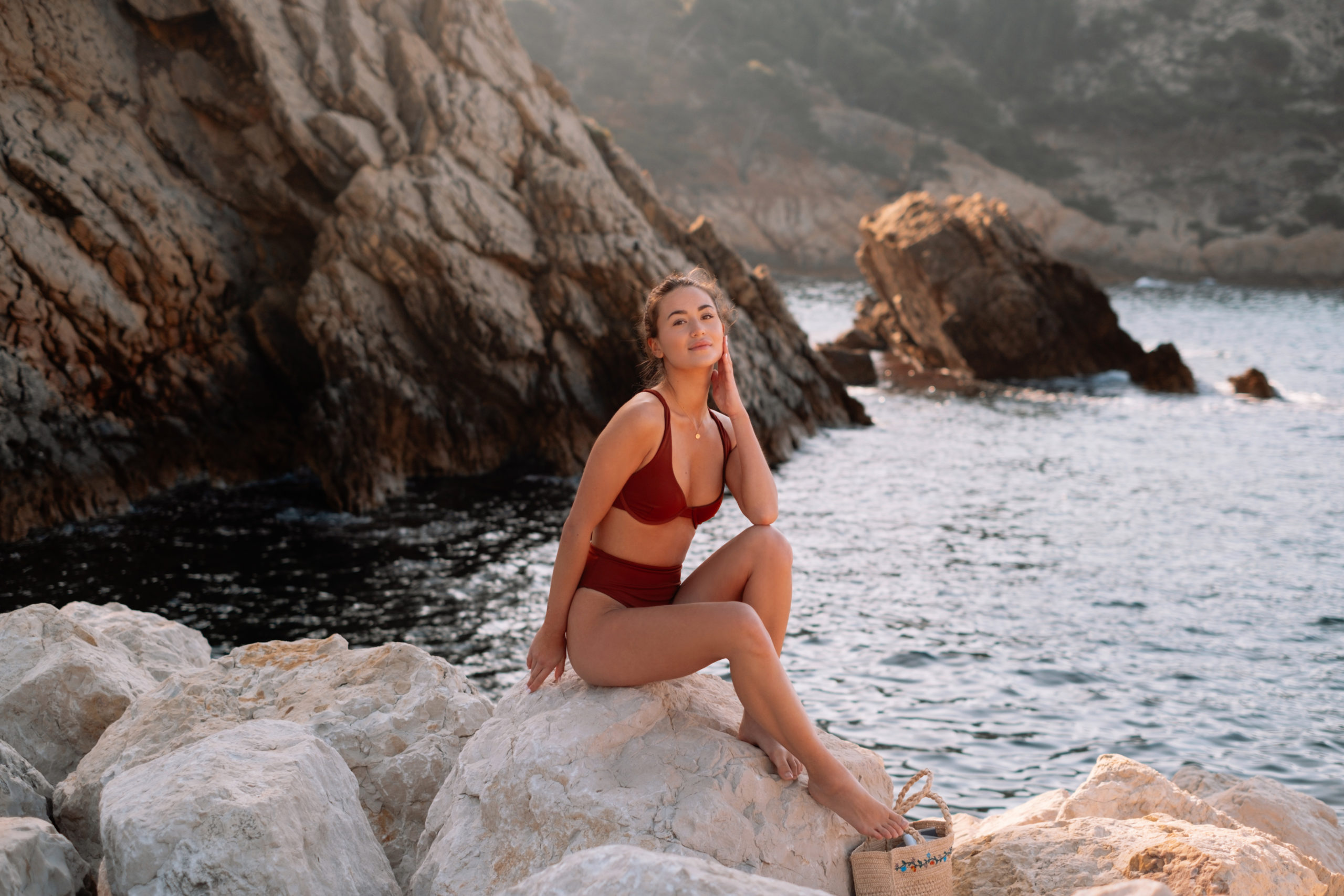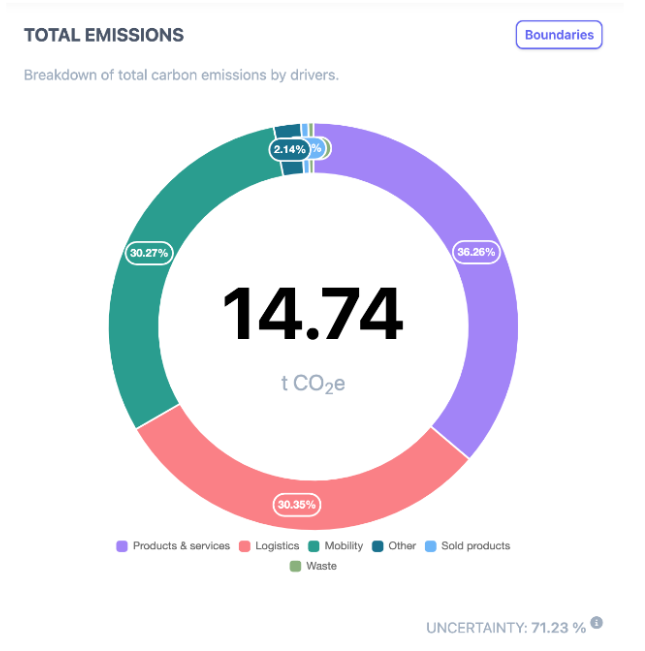Kaly Ora – hub.brussels – Tapio: a unique design combining sustainable fashion and climate expertise
In recent years, fashion has hit the headlines for its impact on the environment and on people. Fortunately, some businesses in the sector are not afraid to innovate and show their commitment to reducing their impact. Kaly Ora is one of them. Are you an actor in the fashion industry who wants to reduce its carbon footprint? This article is for you. Be inspired by the Kay Ora x hub.brussels x Tapio collaboration and become an actor of change!

“Doing fashion differently”
Kaly Ora is a Belgian brand of eco-friendly swimwear and homewear founded by Flore Carlier and Trang Nguyen and located in Belgium. The project was born under the Thai sun following an awareness of the impact of the fashion industry on the environment and on the treatment of workers. The two co-founders had a goal: to do things better and differently. Kaly Ora’s objective was to help protect the environment by offering unique pieces with timeless design.
Kaly Ora’s first collection is made up of pieces made from recycled plastic waste from the oceans (mainly fishing nets). To guarantee a product that respects the environment and people, Kaly Ora uses the highest quality ECONYL® regenerated nylon yarn. It favours collaboration with workshops, not industries, and is part of a transparent economic and inclusive system that places great importance on sharing the cost of its success with its partners.
The adventure of decarbonation coaching
As a sustainable brand, it was important for Kaly Ora to know where and how to act to reduce its carbon footprint and ensure more transparency towards its customers. In 2022, the company was selected with five other startups to participate in a decarbonisation coaching. The coaching was conducted by June Van Veer, sustainable business model advisor at hub.brussels, and Tapio employees. At the end of this coaching, the participating companies not only became aware of their impact, but also left with solutions to reduce it. Read more about this in our case study.
Results analysis
Kaly Ora has carried out a complete carbon report (scope 1, 2 and 3), from production to the end of its products’ life, including logistics. For the moment, it is still a small company. However, its products and balance sheet will evolve as the company grows. While emphasising its commitment to continuous improvement, Kaly Ora is keen to mention the areas of focus it intends to monitor in the future.
As shown in the illustration, transport by air currently accounts for the largest share of Kaly Ora’s emissions (28% = 4.08 tonnes). For Flore Carlier, co-founder of the company, reducing the carbon footprint will depend on the choice and location of suppliers and the products used. In this sense, Kaly Ora intends to make significant changes in 2023. One example is the transfer of production from Bali to their much closer workshop in Turkey. Another notable change is the company’s intention to reduce emissions from its upstream logistics – e.g. procurement – by favouring road transport (trucks) over air transport.
As Kaly Ora does not have any offices, vehicles or warehouses, its entire carbon report is made up exclusively of indirect emissions under scope 3. Thanks to Tapio’s drivers, the main sources of emissions can be seen directly, as the graph shows. The first source is the products and services, mainly the materials needed to make the different parts. The second source of emissions is logistics, where the aircraft accounts for almost 98% of the emissions from this driver. The plane represents 99% of the emissions linked to the mobility driver. These emissions are mainly due to travel to visit suppliers abroad. It should be noted that Flore works alone from home. Therefore, unlike other companies, this figure does not take into account the emissions generally emitted by employees commuting to and from work.

Solutions
Once Kaly Ora’s impact had been calculated, Tapio set about developing reduction scenarios and calculating the reduction potential for each action that Flore intended to undertake. A fruitful meeting particularly appreciated by the entrepreneur. In the future, the company plans to increase the number of products sold from 2450 in 2022 to 7100 by 2032. They aim to reduce the amount of emissions per thousand products sold by 57%, from 6 tonnes of CO2e in 2022 to 2.6 tonnes of CO2e.
1. Mobility
To achieve these goals, our teams provided several ideas. For example, to reduce mobility-related emissions, Tapio suggested that the company replace air travel of less than 1,000 km or reduce air travel to Turkey. The solution would be to send the materials directly to Belgium rather than travelling to see them.
2. Logistics
In terms of upstream logistics, Tapio suggested that the company replace the Asian supplier with a European supplier. This hypothesis would allow the supply distance to be divided by 5 and would reduce the footprint by 9.2 tCO2e. The replacement of half of the air travel by train via the Belgian rail freight companyLineaswas also discussed. This would reduce Kaly Ora’s footprint by 1.1 tCO2e. Eventually, a solution to reduce emissions from downstream logistics would be to make deliveries using more environmentally friendly modes of transport such as bicycles or electric vehicles, especially for the last mile. Based on our solution generator, we have proposed several electric solutions such as urbike, Shippr, Urbeez.
What’s next
Now that it is aware of its impact, the next challenge for Kaly Ora is to engage all of its suppliers and customers by communicating on its reduction strategy and targets via the Tapio tool. In other words, including all stakeholders in its reduction strategy, even if it means asking them for data on their carbon emissions. In order to reduce emissions related to logistics (meeting with suppliers abroad) and to stop air travel, the company will also have to consider other collaborations with suppliers closer to home who supply the material directly in Belgium.
“A super friendly team to guide you through this first experience”
Now aware of her impact thanks to our platform, Kaly Ora knows where to act to reduce its footprint. For Flore Carlier, the most striking result of the adventure remains the carbon footprint of photo shoots and personal travel to visit suppliers. Of course, calculating the carbon footprint is a lot of work. But as Flore says, this step is essential to understand where to act and the right actions to take. Regarding her favourite application on the platform, the co-founder particularly appreciated our solutions generator, thanks to which she discovered many new resources and service providers to help her achieve her reduction goals. Finally, as the co-founder points out, Kaly Ora can count on the Tapio team’s benevolence and availability to answer her questions and guide her through this unique first experience.
Become an actor of change!
In the future, carbon accounting will be essential in the development of any company’s climate strategy. Kaly Ora’s experience has shown that it is perfectly feasible to combine fashion with social and environmental imperatives. As a fashion player, you too can become an actor of change. And we can help you. As highlighted in this article, understanding your impact is the first essential step. Want to know more? Estimate your impact now or reach out to our Team to receive an offer that fits your profile and needs!
Sources:
DESCAMPS, S. “Kaly Ora: des tenues de plage et d’intérieur recyclées et sans couture”, Trends-Tendances, 20 décembre 2021, available at : https://trends.levif.be/entreprises/kaly-ora-des-tenues-de-plage-et-dinterieur-recyclees-et-sans-couture/ (Accessed on March 1st, 2023).